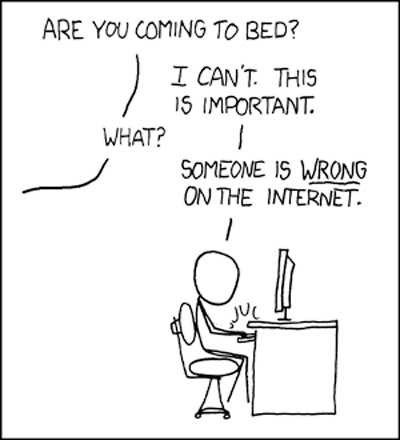Horace Dediu has an interesting article on Android engagement considering results from web activity on differing devices. In short, though there are a lot more Android devices, their usage on the web is a lot smaller than iOS (and we also know that Android users buy fewer apps) so what are these people doing?
My theory is that they’re using them to make calls and send texts.
Increment the Activation when the unique device ID associated with the user’s Google account was different than the previous reset.
Which works great when the market is not saturated. But as soon as an Activator hands down a device to another user (Mom, Pop, Little Brother), it counts as another activation. That means that sales of devices are probably a lot lower than reported Activations.
On devices sitting in drawers:
I know when I got my Nexus 7, there was a screen with loud banners and widgets trying to get me to buy stuff, and my primary reaction was irritation.
Apple, of course, relies on device sales to make its money, and so there is no sales pressure present anywhere in the device. You can use the iTunes store and the App Store, but they are just icons on the screen; they are not given any particular prominence, and you are free to ignore them if you want.
That seems like a strange advantage when it comes to getting people to buy stuff with the device, but my working theory is that the hard sell on many of these devices causes them to be dumped in drawers and never looked at again, while Apple’s soft sell makes people more engaged and happy with their purchase.
I don’t entirely agree with this. I think that the devices he refers to in his comment (the really low-end tablets and phones) do get dumped in drawers but I don’t think it’s due to the hard sell. Certainly the advertising on these devices is tiresome but you don’t get anything for free.
But the “give away the razors and sell the blades” model they are employing relies on selling a premium blade. For example, printer makers and game consoles virtually give away their hardware and make it up from the exclusive – and high margin – sale of ink and gaming cartridges. There is nothing premium about the content or the advertising that the Nexus or the Fire are selling. Therefore the model fails.
Apple have always maintained the iTunes Store is “break even”. It’s entirely possible that the margins they get from apps and music are very low (for Apple) and therefore they consider it to be negligible. It’s entirely possible that these margins are high enough to sustain a very successful business. For example, Apple sold 1.3 million of the Apple TV in the June quarter of this year. For most, that’s a brilliant business; for Apple, it’s a hobby. And do you think the margins on the Apple TV are close to zero?
The average tablet is capable of surfing the web and other than advertising revenue, when someone surfs the web or reads email they’re not contributing a cent to the content ecosystem. Apple can take that on the chin because they make money on the device. It’s in their interest to make that experience worthwhile
The reason there is a disparity in that Android users are not browsing the web is because they simply cant (effectively). The majority of Android users are running 2.3 [sic] which is a horrible internet experience. So though, yes, it is true that Android Popularity surged and has gone over the iOS, the main reason for this is simply just because it was an alternative
I don’t think this is the only reason, but it’s contributing to the mix. We have two Android devices in the house and both of them are “orphaned” by the manufacturers (HTC, Samsung). And being out of date means malware.
Apple devices seem to be marketed as devices that do something. Commercials show the device in use, doing stuff like editing a photo or drawing a picture. People who respond to this marketing do so because they too want to do these things too.
Android devices, on the other hand, seem to be marketed around other factors – you almost never see the device being used to solve some need. Instead, they seem to be marketed around emotional factors. Droid is tough. Galaxy is for folks who think Apple fans are iSheep.
I think Samsung is changing this, especially with some of the Note marketing I’ve seen this year. Their examples may not be as clear as Apple’s but they’re certainly trying to appeal to folk trying to get stuff done. Maybe they figured out that insulting customers wasn’t a way to win.
The Note commercials, while not attracting me to buy one, are interesting me. That’s a subtle difference and reflective of my demographic.





